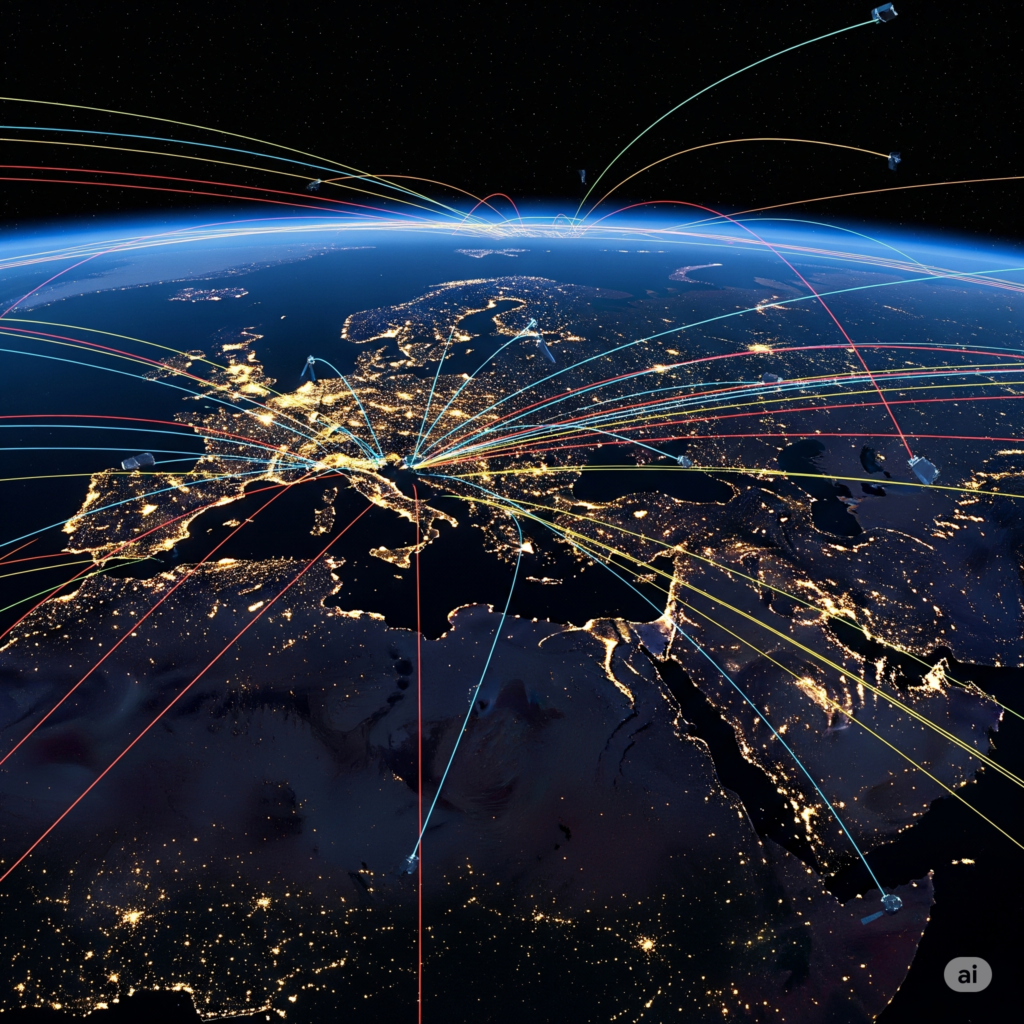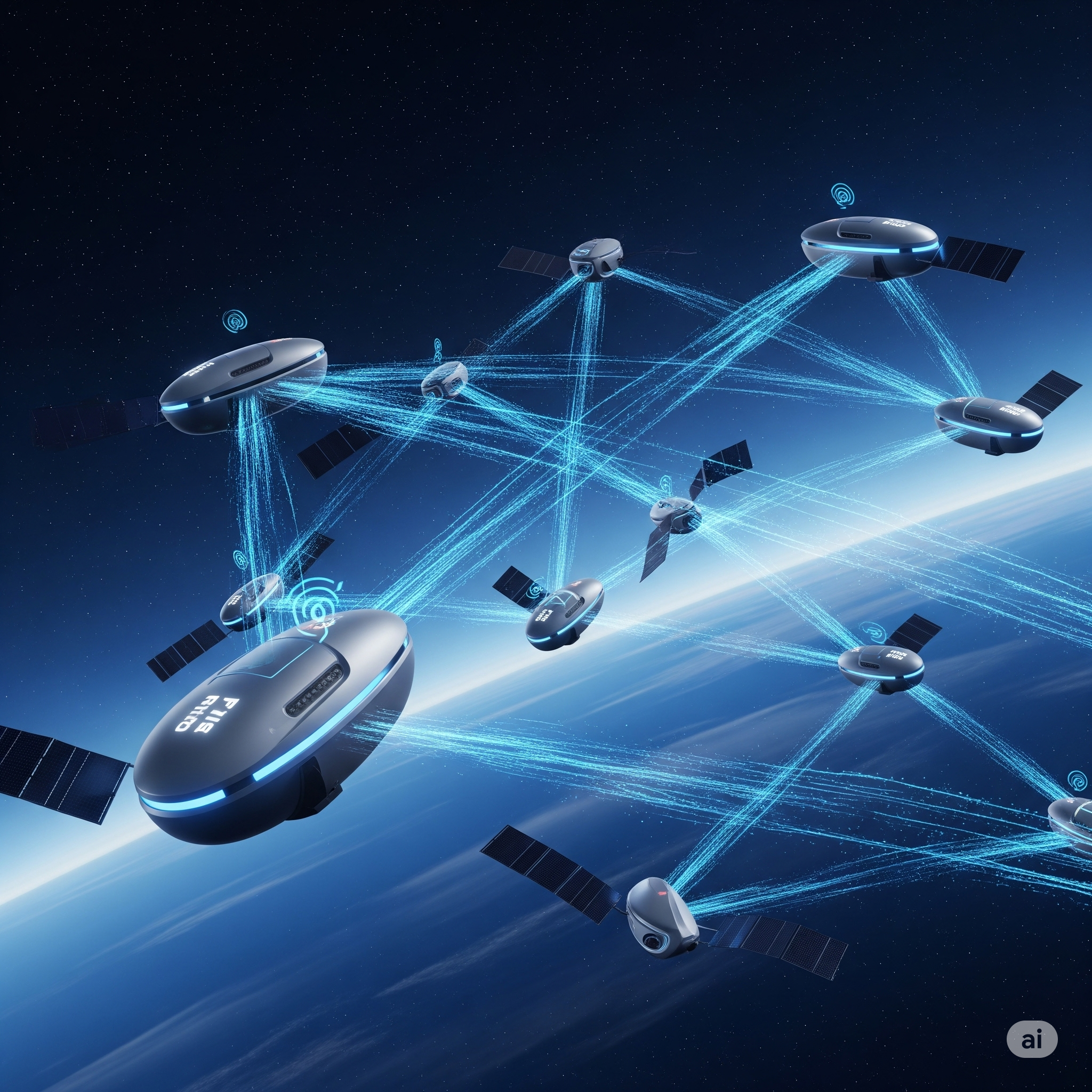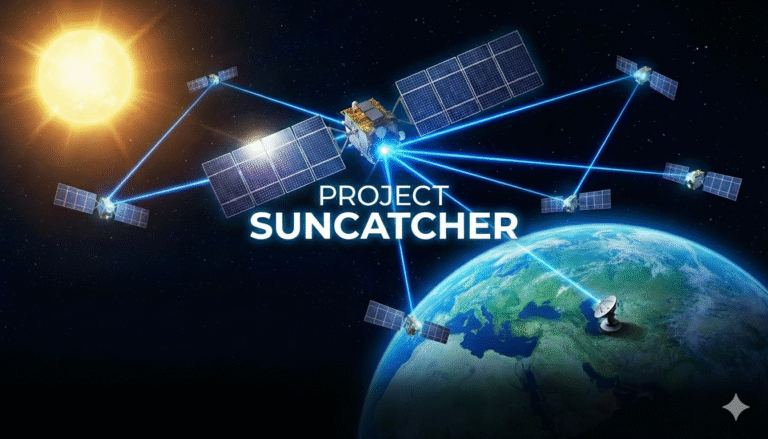Space is no longer just about communication and observation—it’s now becoming the next frontier for artificial intelligence. In a groundbreaking move, China has started deploying an orbital supercomputer by launching the first 12 satellites of the “Three-Body Computing Constellation,” a planned 2,800-satellite network aimed at space-based edge AI processing. This bold initiative positions China at the forefront of a technological shift that could redefine everything from real-time Earth monitoring to autonomous robotics and global internet.
Social Media Intro
China’s new satellite supercomputer leapfrogs AI into Earth’s orbit!
What Is Edge Computing in Space?
Edge computing refers to processing data close to its source instead of sending it back to distant data centers. In Earth applications, this means having powerful AI on devices like factories, cars, or phones. But what if you could process massive streams of data right in space—aboard satellites themselves?
The benefits:
- Faster Decisions: Images and sensor readings get processed instantly without waiting for relay to ground stations.
- Lower Latency: Essential for uses like disaster response, autonomous vehicles, or military defense.
- Bandwidth Efficiency: Only the insights (not the raw data) need to be sent to Earth, saving huge amounts of bandwidth.
- On-Orbit Autonomy: Satellites, telescopes, or lunar/Martian rovers can make intelligent decisions on their own.
The Three-Body Computing Constellation: A Gamechanger
What We Know So Far
- Orbital Supercomputer: The “Three-Body Computing Constellation” is planned as a 2,800-satellite network, with the first 12 satellites already launched by China.
- AI at Scale: Each satellite is contains high-performance chips designed for advanced AI workloads—such as machine learning, computer vision, and complex signal analysis.
- Networked Intelligence: When fully deployed, the constellation will function as a giant, distributed supercomputer in low Earth orbit.
- Applications: Space-based AI boosting fields like:
- Disaster monitoring and response
- Hyperspectral imaging for agriculture and resource management
- Secure, low-latency military communications and reconnaissance
- Space traffic control and satellite servicing
- Internet-of-Things (IoT) from orbit
How Does It Work?
- In-Orbit Processing
- Satellites receive, process, and analyze sensor data (images, environmental readings, signals) directly, using onboard AI accelerators.
- Inter-Satellite Communication
- Satellites share tasks/data with each other to balance loads, increase redundancy, and provide seamless coverage.
- Selective Downlink
- Instead of sending everything to the ground, satellites transmit only valuable processed information—reducing bottlenecks and costs.
Why Is This a Big Deal?

Benchmarking the Future
- First-of-its-Kind Scale: No country has attempted edge AI at the scale of 2,800 orbiting nodes dedicated to collective space computing.
- Triggers Global Rethink: The project’s scale has already prompted global players (US, EU, Russia, private firms) to accelerate their own space-based AI and edge computing research.
- Enhancing National Security: Satellite AI supports encrypted comms, early-warning systems, and threat detection.
- Commercial Impact: Fast image processing can revolutionize agriculture, disaster management, climate science, maritime industry, and more.
- AI for Space Exploration: Self-thinking probes and telescopes in deep space will rely less on Earth control, enabling genuine autonomy.
Challenges and Considerations
- Radiation Hazards: Advanced AI chips are more delicate than typical space hardware and must be hardened against cosmic rays.
- Energy Management: Edge processing requires significant power, which must be balanced with onboard solar capacity.
- Cybersecurity: Spaceborne supercomputers are potential cyber targets and demand robust, quantum-proof encryption.
- International Regulatory Gaps: Coordination over satellite traffic, radio bands, anti-satellite (ASAT) risks, and shared orbits will become urgent as more countries join the race.
- Sustainability: Large constellations increase orbital debris risk; responsible space stewardship and de-orbiting protocols are vital.
Conclusion: The Dawn of a New Space Intelligence Era
China’s Three-Body Computing Constellation isn’t just a technological triumph—it’s a signal that the future of AI and computational power is beyond our planet. By moving key AI operations into orbit, China is not only gaining speed and data sovereignty but also inspiring a worldwide acceleration in space-based edge computing.
As this orbital supercomputer grows, we may soon witness satellites that autonomously predict disasters, safeguard planetary assets, and even aid humanity’s reach into the solar system—raising intriguing questions for governance, ethics, and global collaboration. As edge AI moves to the stars, the space race is in rewriting not just by rockets, but by the data and intelligence that ride aboard.









+ There are no comments
Add yours